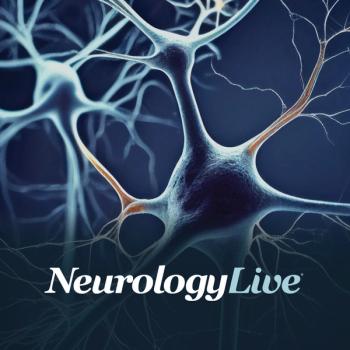Alzheimer disease (AD) and frontotemporal dementia (FTD) are both prevalent forms of dementia yet distinguishing between them remains a significant challenge because of their overlapping symptoms.1 However, quantitative electroencephalography (EEG) is emerging as a promising tool in dementia research, offering the potential to identify biosignatures that can differentiate between AD and FTD.2-5 In a recent pilot study, researchers successfully identified distinctive EEG biosignatures linked to each condition, though further research is necessary to confirm these findings and establish their reliability in distinguishing dementia subtypes.6
Using a quantitative analysis, the study revealed that both AD and FTD patients exhibited a slowing of the posterior dominant rhythm (PDR) frequency. However, the study authors observed a notable difference: PDR power was significantly reduced in patients with AD, while it remained relatively preserved in those with FTD. Overall, the study highlighted that different subtypes of FTD may present unique EEG abnormalities. For instance, behavioral-variant FTD showed more pronounced PDR slowing, while primary progressive aphasia FTD was characterized by more delayed event-related potential components.
These findings were presented by senior author Chris Berka at the recently concluded 2024 Alzheimer’s Association International Conference (AAIC), July 28 to August 1, in Philadelphia, Pennsylvania. In a new iteration of NeuroVoices, Berka, chief executive officer and cofounder at Advanced Brain Monitoring, had a conversation with NeurologyLive® during the conference to discuss how EEG biomarkers be used to differentiate between AD, Lewy body dementia (LBD), and FTD. She also talked about the challenges in diagnosing FTD, especially in its early stages, and how it often gets misclassified. Further into the interview, she spoke about how the integration of AI and pattern matching can potentially enhance the identification of neurodegenerative diseases through EEG data.
NeurologyLive: For our clinical audience, could you provide an overview of your pilot study on comparative EEG biosignatures in AD and FTD?
Top Clinical Takeaways
- EEG biomarkers, particularly in the resting state and during attention and memory tasks, are showing promise in differentiating neurodegenerative diseases.
- Early and accurate diagnosis of diseases like frontotemporal dementia is crucial as it can significantly impact treatment paths and patient outcomes.
- Collaborations and expanded data collection are essential to improve the accuracy and utility of EEG-based biomarkers in clinical practice.
Chris Berka: It's a pleasure to be here, and this is an exciting conference—an exciting time for neurodegenerative diseases in general. This project is part of a much larger initiative funded primarily by the National Institutes of Health, specifically the National Institute on Aging. We have acquired data from over 10,000 sessions with healthy controls. Our database includes EEG data from resting state, where participants are sitting comfortably with their eyes open or closed, as well as during an attention task and 2 memory tasks with concurrent EEG. The combination of these tasks forms a platform for assessing and assisting neurologists in diagnosing neurodegenerative diseases.
We have been studying AD, and as part of that NIH grant, we've also been studying LBD and a large cohort of individuals with mild cognitive impairment (MCI). This particular study, which I presented at this conference, focuses on FTD. What's interesting about FTD is that it is difficult to distinguish, especially in the early stages, from AD and LBD. Our goal with quantitative EEG is to provide clinicians and researchers with a method to differentiate these dementia subtypes as early as possible. What we know about MCI is that it may or may not progress to any of the dementias. In fact, about 50% of those with MCI might not progress. They may maintain their current diagnosis, or they may progress to one of the dementia subtypes.
Specifically, we are looking at the distribution of EEG signals across the scalp in AD and LBD. When healthy individuals close their eyes, they transition from an eyes-open resting state to an eyes-closed resting state, where we observe the posterior dominant alpha rhythm. "Posterior" means it is primarily in the visual cortex, the occipital region at the back of the head. Interestingly, this rhythm is preserved in AD. While overall alpha activity is suppressed in AD, the posterior dominance of the alpha rhythm remains intact, even in the later stages of the disease. In LBD, however, the posterior dominance of the alpha rhythm is completely obliterated. In Frontotemporal dementia, we still see the posterior dominant rhythm, but the peak of the rhythm becomes slower and slower. This slowing of the posterior dominant rhythm indicates cognitive decline or progression.
Since this is a pilot study, what do you see as the next steps in expanding your results?
The most important thing right now is examining the disease trajectory. Fortunately, the NIH is funding us to conduct longitudinal work. Some of the patients in our clinical trial have been followed since 2017, with a break during the pandemic. Unfortunately, we lost several patients during the pandemic—some passed away, while others were unable or unwilling to return to the clinic post-pandemic. But we're looking at the entire disease trajectory. We've also been following healthy controls since 2017, and we're beginning to see some of them transition to abnormal brain biomarkers, which is predictive of cognitive decline. What we hope to achieve with this trajectory data is to identify how early we can detect these markers using EEG and develop prognostic biomarkers to predict later stages of the disease.
So far, we've found that while resting-state EEG provides valuable information—particularly the changes in the posterior dominant region as a key differentiator—it is the event-related potentials measured during memory and attention tasks that are giving us a much earlier and more sensitive indication of the transition to neurodegenerative diseases. In the case of LBD, the primary disturbance is in the visual system and visual cortex. We've found some evidence that we can predict hallucinations based on visual evoked potentials. With FTD, which has multiple subtypes, there's the behavioral variant, which primarily affects the frontal region first. We've seen indications of this in our event-related potential activity, which helps differentiate the behavioral variant from primary progressive aphasia (PPA), which affects speech production and understanding. In the PPA variant, we see relatively normal resting-state data, but differences emerge in the event-related potentials, particularly those over the temporal-parietal region.
We're always data-hungry. We have data from 10,000 performances from healthy controls but a much smaller subset from neurodegenerative disease patients. However, we've implemented these systems in several clinical and neurology clinics where we're collecting routine patient data. Anyone presenting with a memory complaint is run through the same platform, and we're rapidly expanding our data sets. We've already identified a few patients in our clinical cohort who appear to have FTD, and we've been able to alert clinicians. EEG is never going to be the complete diagnostic solution—it's an adjunct—but it can be very helpful for clinical neurologists to differentiate patients inexpensively and easily, especially early in the process.
How would you currently assess our ability to diagnose FTD and how can your data enhance our current assessment methods?
The challenge in the very early stages is that patients with FTD, especially those with the behavioral variant, are often classified as having AD or are treated on the AD path. They won’t respond to anti-amyloid therapy if they don’t have amyloid markers. Generally, tau is considered to be more prevalent or involved in FTD. Hopefully, we will have treatments targeting tau to help alleviate some of the issues associated with it. While AD is often seen as the dominant category, estimates suggest that anywhere from 20% to 30% of patients classified as having AD may not actually have it. Sometimes, we only know the true diagnosis post-mortem, and mixed pathologies are also common. A full neuropsychological assessment with a qualified neuropsychologist can help differentiate between PPA and the behavioral variant of FTD.
There's also a link between FTD and ALS, for which we have genetic markers. Unfortunately, this disease progression is particularly challenging. I believe EEG markers add to the clinician's toolkit, providing additional information early in the process. Sometimes, with FTD, it’s the caregivers or family members who need to be involved in the neuropsychological assessment or clinician interview, as they often observe changes that the patients themselves may not notice—especially with the behavioral variant. For example, patients with the behavioral variant may start acting impulsively or lose their social filters. A grumpy outburst at a restaurant, for instance, might just be dismissed as "Dad's being difficult," but these observations can be very helpful in the diagnosis.
What we're hoping is that these electrophysiological profiles will provide a more definitive set of biomarkers. We aim to offer clinicians biomarkers associated with mild cognitive impairment, AD, and LBD, and now we're adding FTD to that list. We've already had discussions with one of our clinicians who observed that a patient's profile closely resembled our behavioral variant FTD cohort. It’s in the early stage, but with more data, we can enhance pattern matching with AI. One of our goals at this meeting is to collaborate with other researchers to acquire more data.
Transcript edited for clarity. Click here to view more NeuroVoices.
REFERENCES
1. DeLozier SJ, Davalos D. A Systematic Review of Metacognitive Differences Between Alzheimer's Disease and Frontotemporal Dementia. Am J Alzheimers Dis Other Demen. 2016;31(5):381-388. doi:10.1177/1533317515618899
2. Yener GG, Leuchter AF, Jenden D, Read SL, Cummings JL, Miller BL. Quantitative EEG in frontotemporal dementia. Clin Electroencephalogr. 1996;27(2):61-68. doi:10.1177/155005949602700204
3. Chang J, Chang C. Quantitative Electroencephalography Markers for an Accurate Diagnosis of Frontotemporal Dementia: A Spectral Power Ratio Approach. Medicina (Kaunas). 2023;59(12):2155. Published 2023 Dec 13. doi:10.3390/medicina59122155
4. Nardone R, Sebastianelli L, Versace V, et al. Usefulness of EEG Techniques in Distinguishing Frontotemporal Dementia from Alzheimer's Disease and Other Dementias. Dis Markers. 2018;2018:6581490. Published 2018 Sep 3. doi:10.1155/2018/6581490
5. Nishida K, Yoshimura M, Isotani T, et al. Differences in quantitative EEG between frontotemporal dementia and Alzheimer's disease as revealed by LORETA. Clin Neurophysiol. 2011;122(9):1718-1725. doi:10.1016/j.clinph.2011.02.011
6. Meghdadi AH, Verma A, Mendez MF, Berka C. Comparative EEG biosignatures in Alzheimer’s disease and frontotemporal dementia: A pilot study. Presented at: 2024 Alzheimer’s Association International Conference; July 18 to August 1; Philadelphia, Pennsylvania. Abstract 332.



































